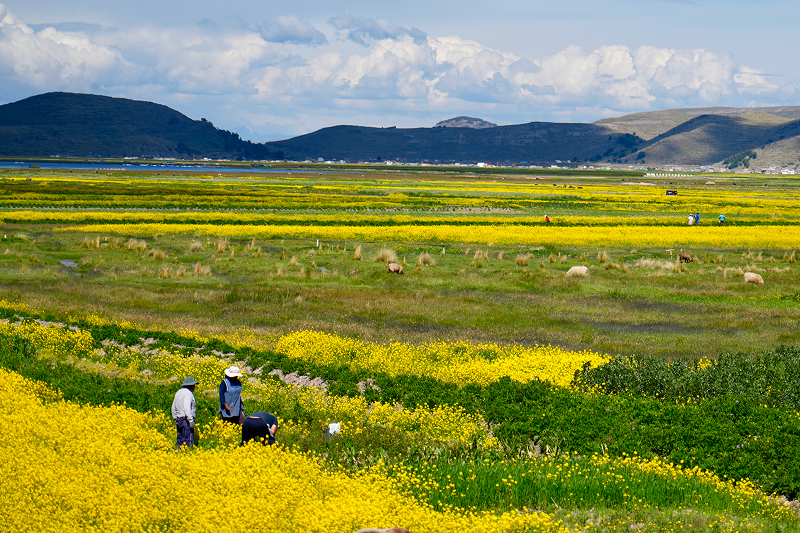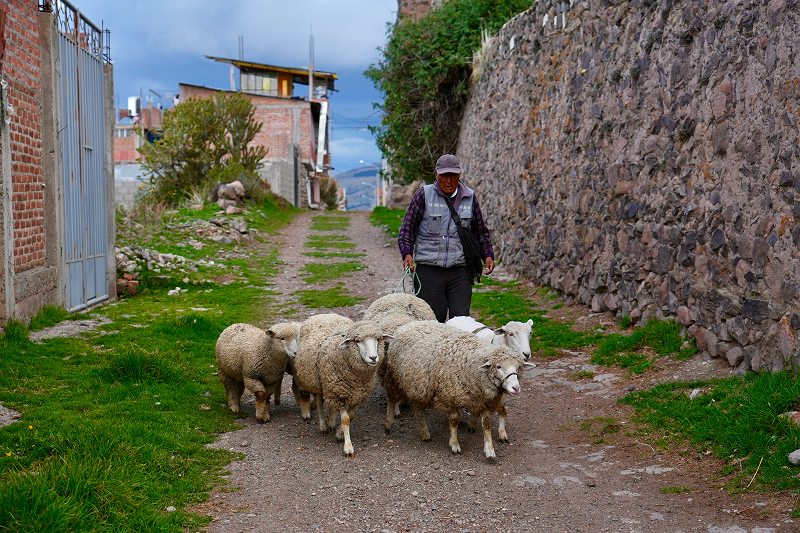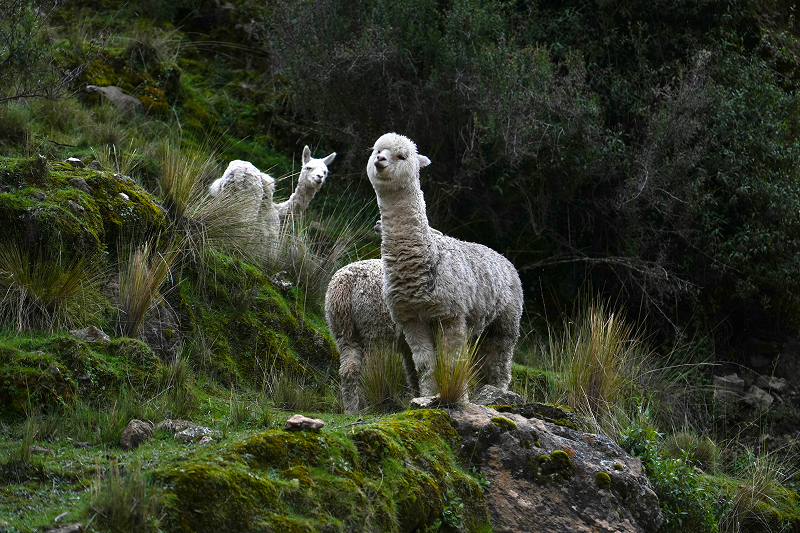Day 394 of the expedition was spent in La Paz. The city tour was quite unique, as we explored it not by car or bus, but via the cable car system that the city is renowned for. Nestled in a vast basin and surrounded by some of the most beautiful mountains, with the highest peak reaching 6,150 meters, the city boasts an extensive network of cable cars. By transferring from one line to another (there are currently 10 lines), we had the opportunity to endlessly admire La Paz from a bird’s-eye view.
On day 395, we bid farewell to the hospitable and colorful Bolivia. The vast capital, La Paz, left a strong impression on us.
On our way to the Peruvian border, we visited the town of Tiwanaku, an ancient city that served as the spiritual and political center of the eponymous Andean civilization. It is located 15 km from the southern shore of Lake Titicaca. The city was likely founded around 110 A.D. Tiwanaku holds a significant place in the myths and beliefs of the contemporary Aymara people.
Next, we headed towards Lake Titicaca and the border with Peru. This lake is the largest on the continent in terms of freshwater reserves.
We continued on to the Peruvian border, covering 290 km in a day.
On day 396, we embarked on a journey to the ancient city of Cusco. Archaeological excavations revealed that people have been settling in this area for over 3,000 years.
The name of the city, translated from Quechua — the official language of the Inca Empire — means “Navel of the Earth,” essentially the “Center of the World,” which aptly reflected its status as the capital.
Halfway to Cusco, a special stop awaited us at the site of Raqchi. Raqchi, an archaeological complex from the Inca era, served as a religious and administrative center. In the 15th century AD, the Incas built the Temple of Viracocha here along the famous Inca Trail from Cusco to Machu Picchu. Under the open sky, picturesque fields are sown with corn, beans, and potatoes. The museum complex felt very “alive” and well-maintained, with trimmed grass, lawns, colorful flowers, souvenir shops, and small stone-paved squares. It almost seemed like you could meet Incas returning from work on the paths. The Peruvians’ respect for their history is truly remarkable.
Not far from Cusco lies Moray, another monument of Inca civilization featuring a large “amphitheater,” which in reality are ancient agricultural terraces.
The town of Puno bid us farewell with its autumn coolness (at an altitude of 3,800 meters, the morning temperature was seven degrees Celsius). The landscapes around here were vastly different from those in Argentina and Bolivia.
Part of our team went to explore the Rainbow Mountains of Palcoyo. We covered a distance of 476 km in one day.
On day 395, we bid farewell to the hospitable and colorful Bolivia. The vast capital, La Paz, left a strong impression on us.
On our way to the Peruvian border, we visited the town of Tiwanaku, an ancient city that served as the spiritual and political center of the eponymous Andean civilization. It is located 15 km from the southern shore of Lake Titicaca. The city was likely founded around 110 A.D. Tiwanaku holds a significant place in the myths and beliefs of the contemporary Aymara people.
Next, we headed towards Lake Titicaca and the border with Peru. This lake is the largest on the continent in terms of freshwater reserves.
We continued on to the Peruvian border, covering 290 km in a day.
On day 396, we embarked on a journey to the ancient city of Cusco. Archaeological excavations revealed that people have been settling in this area for over 3,000 years.
The name of the city, translated from Quechua — the official language of the Inca Empire — means “Navel of the Earth,” essentially the “Center of the World,” which aptly reflected its status as the capital.
Halfway to Cusco, a special stop awaited us at the site of Raqchi. Raqchi, an archaeological complex from the Inca era, served as a religious and administrative center. In the 15th century AD, the Incas built the Temple of Viracocha here along the famous Inca Trail from Cusco to Machu Picchu. Under the open sky, picturesque fields are sown with corn, beans, and potatoes. The museum complex felt very “alive” and well-maintained, with trimmed grass, lawns, colorful flowers, souvenir shops, and small stone-paved squares. It almost seemed like you could meet Incas returning from work on the paths. The Peruvians’ respect for their history is truly remarkable.
Not far from Cusco lies Moray, another monument of Inca civilization featuring a large “amphitheater,” which in reality are ancient agricultural terraces.
The town of Puno bid us farewell with its autumn coolness (at an altitude of 3,800 meters, the morning temperature was seven degrees Celsius). The landscapes around here were vastly different from those in Argentina and Bolivia.
Part of our team went to explore the Rainbow Mountains of Palcoyo. We covered a distance of 476 km in one day.





